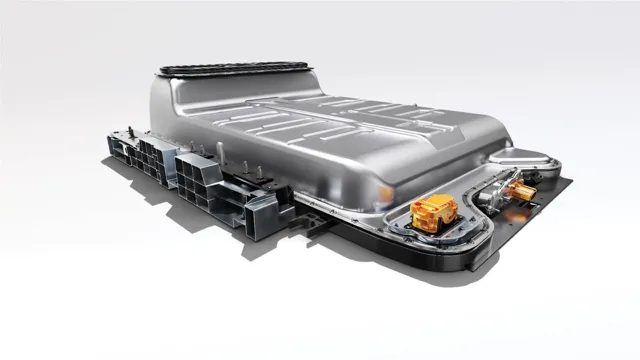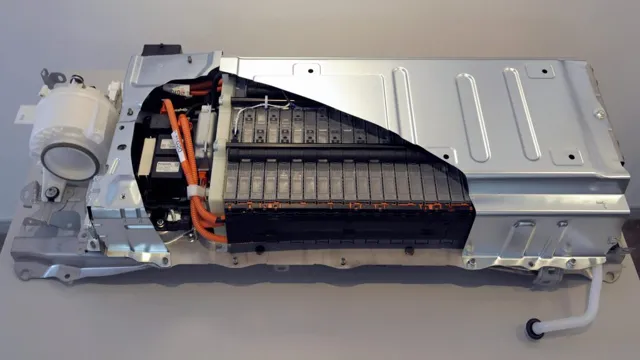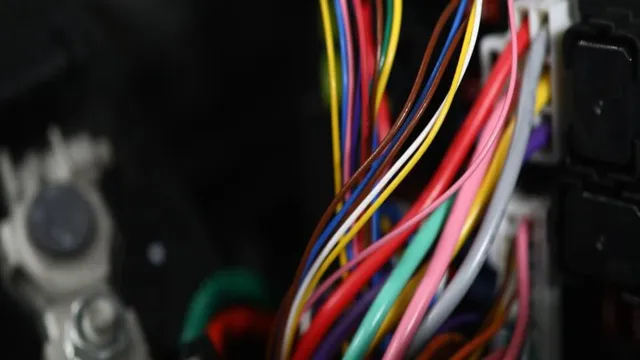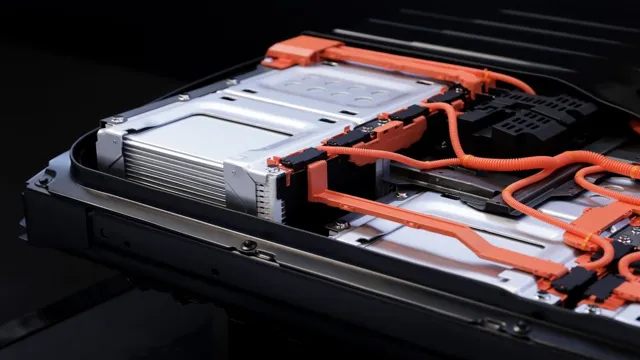Revolutionary Electric Car Batteries of the 1970s: A Game-Changer in Sustainable Transportation
Are you curious about the history of electric cars? You may be surprised to learn that electric car batteries have been around since the 1970s. While electric cars today are gaining popularity and attention, the concept of electric cars actually dates back further than most would think. In the 1970s, an oil shortage led to the development of electric cars as an alternative to traditional gasoline-powered vehicles.
Electric car batteries were seen as a promising solution to the problem of excessive oil consumption. Automakers such as General Motors, Ford, and Chrysler began producing experimental electric car models during this time period. However, despite the initial excitement surrounding electric car technology, it ultimately failed to take off.
The high cost and limited performance of electric car batteries were major barriers to widespread adoption. As a result, the development of electric cars slowed down in the following decades. But fast forward to today, advancements in technology and a growing demand for environmentally-friendly vehicles have led to a resurgence of electric cars.
Modern electric car batteries are capable of longer ranges and faster charging times than ever before. As society increasingly looks towards sustainable transportation options, it’s interesting to reflect on the history of electric cars and the important role electric car batteries played in their development.
Limited Battery Technology
In the 1970s, when electric car batteries were first developed, the technology was limited in terms of range and power. Batteries were large, heavy, and expensive, resulting in cars with limited driving ranges that weren’t practical for everyday use. However, with advances in technology over the years, we now have efficient and reliable electric car batteries that can power vehicles for hundreds of miles on a single charge.
Today’s electric car batteries are smaller, lighter, and more affordable than their predecessors, making them an increasingly viable alternative to fossil fuel-powered vehicles. And with ongoing innovation in battery technology, the future of electric cars looks brighter than ever before. So, if you’re looking to invest in an electric car, now is the time to do it while the technology is rapidly evolving and becoming more accessible to the average consumer.
Early batteries were heavy and inefficient
Early batteries were a far cry from the compact, lightweight power sources we enjoy today. Due to limited battery technology in the past, batteries tended to be heavy and highly inefficient. People used to rely on batteries made from simple materials like copper, zinc, and acid, which provided only a limited amount of electrical power.
These early batteries were prone to leakage and had a short lifespan, making them inconvenient and unreliable. Additionally, they were not able to keep up with the increasing demand for energy from modern devices. It wasn’t until the invention of rechargeable lithium-ion batteries in the 1980s that we finally saw a breakthrough in battery technology, paving the way for smaller, lighter, and more efficient batteries that we use in our everyday lives.
Today, the keyword “battery technology” continues to be a hot topic as researchers strive to address new challenges and find ways to enhance battery performance.
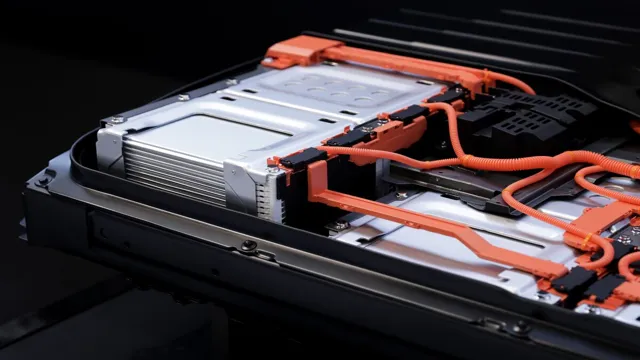
Lead-acid batteries were commonly used
Lead-acid batteries were commonly used in the past due to the limited battery technology available at the time. These batteries were heavy and had a relatively short lifespan, making them less than ideal for many applications. However, they were still widely used because they were inexpensive and readily available.
Many vehicles, such as cars and boats, relied on these batteries to provide power, which could sometimes be a hassle due to frequent replacements and maintenance. Thankfully, advancements in battery technology have led to the creation of more efficient and reliable batteries that are much better suited for modern applications. Today, lithium-ion batteries and other modern battery types are being used to power everything from smartphones to electric cars.
These batteries are lighter, more durable and longer-lasting, making them a much better choice for most applications. They also have the added benefit of being more environmentally friendly since they don’t contain toxic lead and acid like their predecessors. Overall, while lead-acid batteries were once a necessary evil in the world of battery technology, they have since been surpassed by more modern and efficient options.
Short Driving Range
Back in the 1970s, electric car batteries were nowhere near the level of today’s modern technology. The driving range was extremely limited, often only able to go a few miles before the battery needed charging. This short driving range was a major drawback for electric cars, even though they were environmentally friendly and cost-efficient.
Drivers would have to plan their routes carefully and couldn’t go very far without the fear of running out of power. The limited number of charging stations also presented a challenge, making it difficult for drivers to find a place to recharge when they needed it. However, as technology advanced, the range of electric car batteries improved, making them a more practical alternative for drivers today.
Average electric car could only go 50 miles on a single charge
It’s no secret that electric cars have come a long way in terms of technology and sustainability. However, a major issue that still plagues the electric car industry is their limited range. On average, an electric car can only travel about 50 miles on a single charge.
This short driving range causes anxiety in drivers, as they must carefully plan their trips to avoid running out of battery and being stuck on the side of the road. To put it into perspective, think about planning a road trip with an electric car. You would need to research charging stations along the way to make sure you have enough energy to complete your journey.
This inconvenience may discourage potential electric car buyers, as they may not be willing to sacrifice the freedom and flexibility of gasoline-powered vehicles. However, it’s important to note that this is improving every year. New models are constantly being released with higher ranges, and charging infrastructure is becoming more widespread.
In the meantime, electric car owners have found ways to adapt and make the most of their limited range. By carefully planning their routes and making use of public charging stations, they are able to enjoy the environmental and cost-saving benefits of electric cars.
Limited charging infrastructure available
The limited charging infrastructure for electric vehicles is still a major concern for potential buyers due to the short driving range. While electric cars have gained popularity due to their eco-friendly nature and cost-effectiveness, their range is significantly lower than traditional cars. It’s frustrating to realize that there are only a few charging stations available, particularly when on long journeys.
Motorists worry about running out of power or charging their vehicles in time when they’re out on the road. It’s analogous to a marathon without any water stations along the route. The lack of charging infrastructure is a significant problem for EVs, and it continues to dissuade many from making the switch.
However, several initiatives are in place to address this issue, such as installing more charging stations, improving battery technology and developing more sustainable charging solutions. As the adoption rate of electric cars increases, the charging infrastructure would inevitably benefit from substantial improvements in terms of accessibility and convenience.
Discouraged long-distance driving
If you’re someone who enjoys long road trips, you might want to think twice before hitting the road with an electric vehicle. While electric cars are becoming more popular, their driving range is still a major concern for many drivers. Unlike traditional petrol-powered vehicles, electric cars can only travel a limited distance before needing a recharge.
This short driving range can be discouraging for drivers who like to travel long distances without having to worry about constantly charging their car. But don’t let this discourage you from choosing an electric vehicle! With advancements in battery technology and the expansion of charging infrastructure, the range of electric cars is gradually increasing. In the meantime, planning your route in advance and making use of charging stations during breaks can help make your road trip a success.
Failed Production Attempts
In the 1970s, there were attempts to develop electric car batteries, however, most of them failed. The batteries were too heavy, expensive, and had a limited range. This made it difficult for the electric car to compete with gasoline-powered cars.
It was not until the emergence of lithium-ion batteries in the early 1990s that electric car manufacturers saw renewed hope. These batteries were lighter, more durable, and had a longer lifespan compared to the previous battery designs. Today, electric vehicles are becoming more mainstream as lithium-ion battery technology continues to improve.
The history of electric car batteries shows that innovation and perseverance are needed to overcome obstacles and create sustainable transportation solutions.
Electric car production in the 1970s was short-lived
Although it may seem like electric cars are a recent innovation, they actually had a brief moment of popularity back in the 1970s. However, the production attempts during that time were short-lived and ultimately failed. Companies such as General Motors and Ford attempted to create electric models, but faced several challenges that prevented them from succeeding.
One of the main issues was the limited range of the batteries, which made the cars impractical for most consumers. Additionally, the technology was expensive and not yet advanced enough to be mass-produced. As a result, the enthusiasm for electric cars fizzled out and it would be several decades before they made a comeback.
Despite these failed attempts, the 1970s can be seen as an important moment in the history of electric cars, as it demonstrated early experimentation with the technology and paved the way for future development.
Lack of consumer interest and government support
The lack of consumer interest and government support has resulted in failed production attempts for various industries. Despite the introduction of new products and services, many companies struggle to gain traction due to a lack of customer demand. This is often exacerbated by a lack of support from government agencies, who may not prioritize funding for research and development related to certain industries.
As a result, companies are left to bear the burden of development costs on their own, which can be financially crippling. To combat this, companies must work to build up a consumer base by investing in marketing and outreach efforts, as well as advocate for greater government support for their industry. Without these initiatives, many companies are doomed to fail in their attempts at production, no matter how promising their products or ideas may be.
Modern Advancements
Although electric car batteries have come a long way since the 1970s, it’s essential to recognize how pioneers in the industry played a crucial role in bringing us to where we are now. Early electric car batteries were much less advanced than what we have today, and they posed numerous challenges that automakers had to overcome. For instance, these batteries were often bulky and heavy, limiting the range and speed of the cars that used them.
Furthermore, they were pricier than gasoline, making electric vehicles less competitive in the market. However, these limitations didn’t discourage those who believed in the potential of electric vehicles. Over the decades, advances in battery technology and vehicle design have paved the way for more efficient and practical electric cars.
Today, electric car batteries are much slimmer, lighter, and more powerful than before, allowing drivers to travel longer distances without the need for frequent recharges. The development and progress made in electric car batteries throughout history show that even the smallest of advancements can contribute significantly to a more sustainable and eco-friendly future.
Lithium-ion batteries revolutionized electric car industry
Lithium-ion batteries have revolutionized the electric car industry, providing a more efficient and eco-friendly mode of transportation. With modern advancements in technology, these batteries have become smaller, lighter, and more powerful, allowing electric cars to travel longer distances on a single charge. Not only are they more reliable, but they also have a longer lifespan compared to traditional lead-acid batteries.
The burstiness of these lithium-ion batteries allows for quick acceleration, making electric cars as fast as their gas-powered counterparts. It’s like having a sports car that is better for the environment and more cost-effective in the long run. With the increased availability of charging stations and the development of more eco-friendly energy sources, lithium-ion batteries will continue to play a major role in shaping the future of the automotive industry.
Increased driving range and affordability
In recent years, there have been several modern advancements in electric cars that have contributed to increased driving range and affordability. One of the most significant advancements is the improvement of battery technology. Today’s electric vehicles are equipped with advanced lithium-ion batteries that can store more energy and provide longer driving ranges than their predecessors.
Additionally, the manufacturing of these batteries has become more efficient, resulting in reduced costs and increased affordability for consumers. Another advancement is the development of faster-charging infrastructure, allowing drivers to quickly charge their vehicles on the go. With these improvements, the overall cost of owning an electric car has decreased significantly, making it a viable option for more people.
Whether it’s the environmental benefits, the lower cost of ownership, or the thrill of driving an eco-friendly vehicle, electric cars are an increasingly popular choice for drivers in search of a greener way to get around.
Growing charging infrastructure and government incentives
One of the most significant advancements for electric vehicles (EVs) in recent years has been the growing charging infrastructure and government incentives. It’s easier than ever to find charging stations, and as more people adopt EVs, the demand for charging infrastructure will only increase. Governments around the world are also doing their part to encourage EV adoption by offering a range of incentives, such as tax credits and rebates, to reduce the high upfront cost of purchasing an EV.
The combination of more charging stations and government incentives is making EVs a more practical and affordable option for consumers. However, there’s still more work to be done, and as technology continues to evolve, we can expect even more exciting advancements in the future.
Conclusion
In the 1970s, electric car batteries seemed like the “next big thing” in the world of clean and efficient transportation. However, like many other ideas ahead of their time, they were quickly overshadowed by concerns over cost, range, and reliability. Fast forward to today, and we are finally starting to see some real progress in electric car batteries, with major strides being made in both their performance and affordability.
It just goes to show that sometimes even the most promising innovations need a little time to shine.
FAQs
Were electric car batteries available in the 1970s?
Yes, but the technology wasn’t advanced enough to produce electric cars with a desirable range.
What type of batteries were used in electric cars in the 1970s?
Electric cars in the 1970s primarily used lead-acid batteries, which had limited range and lifespan.
Did the use of electric car batteries in the 1970s have a significant impact on the environment?
No, because electric cars weren’t widely adopted due to their limited range and high cost.
Why didn’t electric car batteries become popular in the 1970s?
The technology for electric car batteries wasn’t as advanced as it is today, resulting in limited range and high cost. Additionally, gas prices were relatively low at the time, making gasoline-powered cars a more attractive option.

